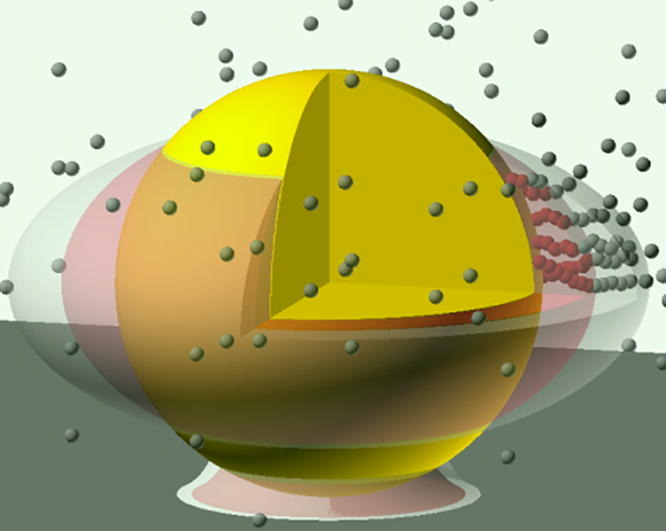Place gold beads (approximately 40 nanometers in diameter) on a silicon nitride blade and illuminate them from below with a visible laser: the electromagnetic waves will excite electronic oscillations (plasmons) within the nanoparticle through surface plasmon resonance. This causes electric charges to appear in the equatorial zone of the beads that are alternately positive on one side and negative on the other, according to each oscillation of the laser field.
The researchers had the idea of using this phenomenon to finely control the photopolymerization grafting of organic molecules onto gold nanoparticles. The surface plasmons in fact enhance the electromagnetic field locally, "doping" the photopolymerization reactions. The spatial precision is exceptional since the distribution of the near optical field is not altered by diffraction. With an adequate tuning of the irradiation, it was possible to graft a polymer layer in an anisotropic way – only in the equatorial region of the nanoparticles – and to control its thickness (from one to two nanometers).
Moreover, they have shown that it is possible to repeat the operation with other monomers, using the first polymer layer as an anchor for the second layer. This two-step operation allows great flexibility in the choice of molecules and accessible functionalizations. An anisotropic coating based on fluorinated monomers could thus be deposited on gold nanoparticles, making them hydrophobic.
Future studies will consist in conferring other localized properties to the nanoparticles by varying the nature of the grafted monomers.
This work, which has been the subject of three recent articles in high-impact journals, was conducted in collaboration with the Mulhouse Materials Science Institute (CNRS-Université Haute-Alsace); the Light, Nanomaterials & Nanotechnologies Laboratory (CNRS-Université Technologique de Troyes); and the Institut de Chimie Radicalaire (CNRS-Aix Marseille University).
